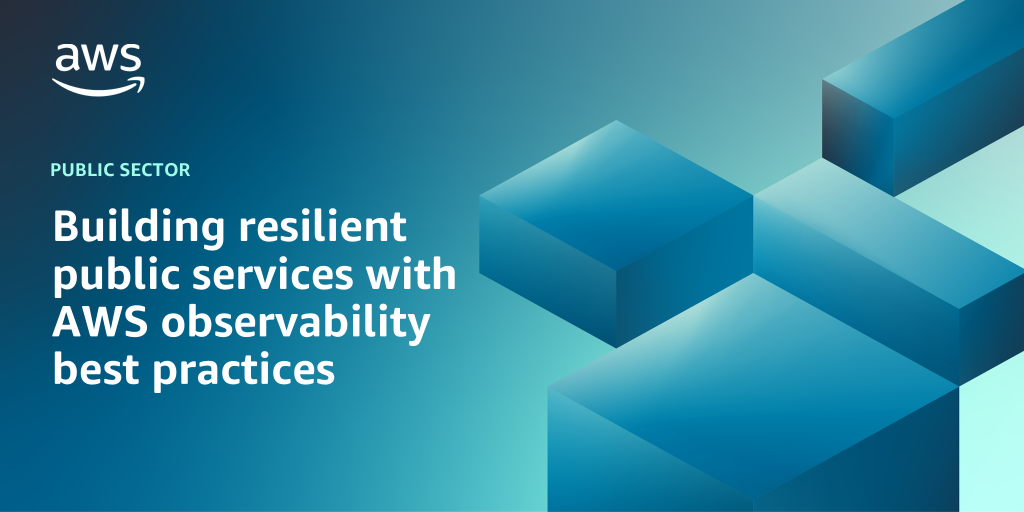AWS Public Sector Blog
Category: Amazon CloudWatch
Building resilient public services with AWS observability best practices
In this post, we introduce AWS observability services, explore best practices for observability, and explain how to achieve them.
How the University of Minnesota Athletics built a unified data layer to drive fan engagement with AWS
The University of Minnesota Athletics Department had access to a lot of data, but lacked a way to bring it together. Even answering simple questions, like how many tickets were sold and who received them, required hours of cross-platform data wrangling. In less than a year, the department replaced that complexity with a scalable data lake built on AWS. The new data architecture—which gives the department full visibility into ticketing transactions and digital behavior—was built by a small internal team, without requiring a complete overhaul of their existing systems.
How NIH scientists unlocked cardiovascular disease insights using AWS
Scientists at the National Institutes of Health (NIH) recently uncovered how a structure known as low-density lipoprotein (LDL), which transports “bad” cholesterol through the bloodstream, interacts with its receptor molecule to enter cells—information that has eluded researchers for decades. The findings could lead to more personalized treatments for cardiovascular disease and were enabled by cutting-edge high performance computing (HPC) infrastructure from AWS. Read this post to learn more.
Amazon EC2 Spot Instances for scientific workflows: Using generative AI to assess availability
In recent years, public sector organizations have found success running their scientific data processing workloads on Amazon Web Services. As the number of workloads increase with the massive data volume and complex scientific simulations, organizations are looking for ways to optimize cost while maintaining research momentum. Amazon EC2 Spot Instances presents a compelling option to run unused Amazon Elastic Compute Cloud (Amazon EC2) capacity with an up to 90 percent discount compared to On-Demand prices. However, the intermittent nature of Spot Instances often requires careful consideration, especially when handling time-sensitive mission-critical workloads. In this post, we discuss how organizations can effectively identify opportunities to use Spot Instances and Amazon Q Business to develop an enhanced Spot Instance analysis.
4 best practices to enhance research IT operations with AWS
Academic research IT departments around the world face the same challenge: how to balance their existing on-premises infrastructure with the opportunities of cloud computing. At the Supercomputing 2024 (SC24) conference, Amazon Web Services hosted a panel featuring two research IT leaders: Circe Tsui, associate director of solutions architecture at Emory University in the Office of Information Technology, and Dr. Robert Shen, director of the RMIT AWS Supercomputing Hub (RACE) at the Royal Melbourne Institute of Technology (RMIT). During the panel, Tsui and Shen shared how their institutions use AWS to augment and enhance their research operations with more scalability, security, and collaboration alongside their on-premises infrastructure. Read this post to learn more.
Well-rounded technical architecture for a RAG implementation on AWS
In the age of generative artificial intelligence (AI), data isn’t just king—it’s the entire kingdom. Our previous blog post, Anduril unleashes the power of RAG with enterprise search chatbot Alfred on AWS, highlighted how Anduril Industries revolutionized enterprise search with Alfred, their innovative chat-based assistant powered by Retrieval-Augmented Generation (RAG) architecture. In this post, we examine the technical intricacies that make this system possible.
Reduce IT costs by implementing automatic shutdown for Amazon EC2 instances
To remain viable and continue to fulfill their mission, educational institutions are constantly seeking ways to optimize their IT costs while maintaining high-quality services. One often overlooked area for potential savings is the management of cloud resources, particularly Amazon Elastic Compute Cloud (Amazon EC2) instances. Many universities and colleges find themselves facing unexpected costs when EC2 instances are left running during off-peak hours or periods of inactivity. In this post, we explore how higher education customers can implement automatic shutdown mechanisms for EC2 instances, significantly reducing cloud expenses.
Establishing a robust cloud platform and operational model through the CCoE
This post is part three of a four-part series that addresses how a Cloud Center of Excellence (CCoE) can be a viable solution to address the challenges of digital transformation. In this post, we address the three technical perspectives of the Amazon Web Services Cloud Adoption Framework (AWS CAF). While the business, organizational, and governance perspectives of the AWS CAF are crucial, the CCoE must also focus on the technical capabilities required to build and operate a cloud environment that meets the organization’s needs.
Data ingress and egress through Trusted Research Environments and other secure enclaves
Data Review & Transfer Component (DRTC) on Amazon Web Services (AWS) provides a seamless solution to review, approve, and automate sensitive data transfer requests into and out of secure enclaves. In this post, we take you through the benefits of using DRTC to review data and other research artifacts for sensitivity prior to transfer into and out of these secure environments, in particular Trusted Research Environments (TREs).
Securing the future of healthcare in the age of generative AI and connected care
The healthcare industry is undergoing a profound transformation, driven by the adoption of generative artificial intelligence (AI), cloud computing, and connected care devices. This digital revolution promises to improve patient outcomes, reduce costs, and enhance the overall healthcare experience. However, it also introduces new challenges in terms of cybersecurity, privacy, and regulatory compliance. To navigate this complex landscape, healthcare organizations are turning to scalable, affordable, and highly available cloud infrastructures such as Amazon Web Services (AWS) to build resilient, secure, and innovative solutions.









